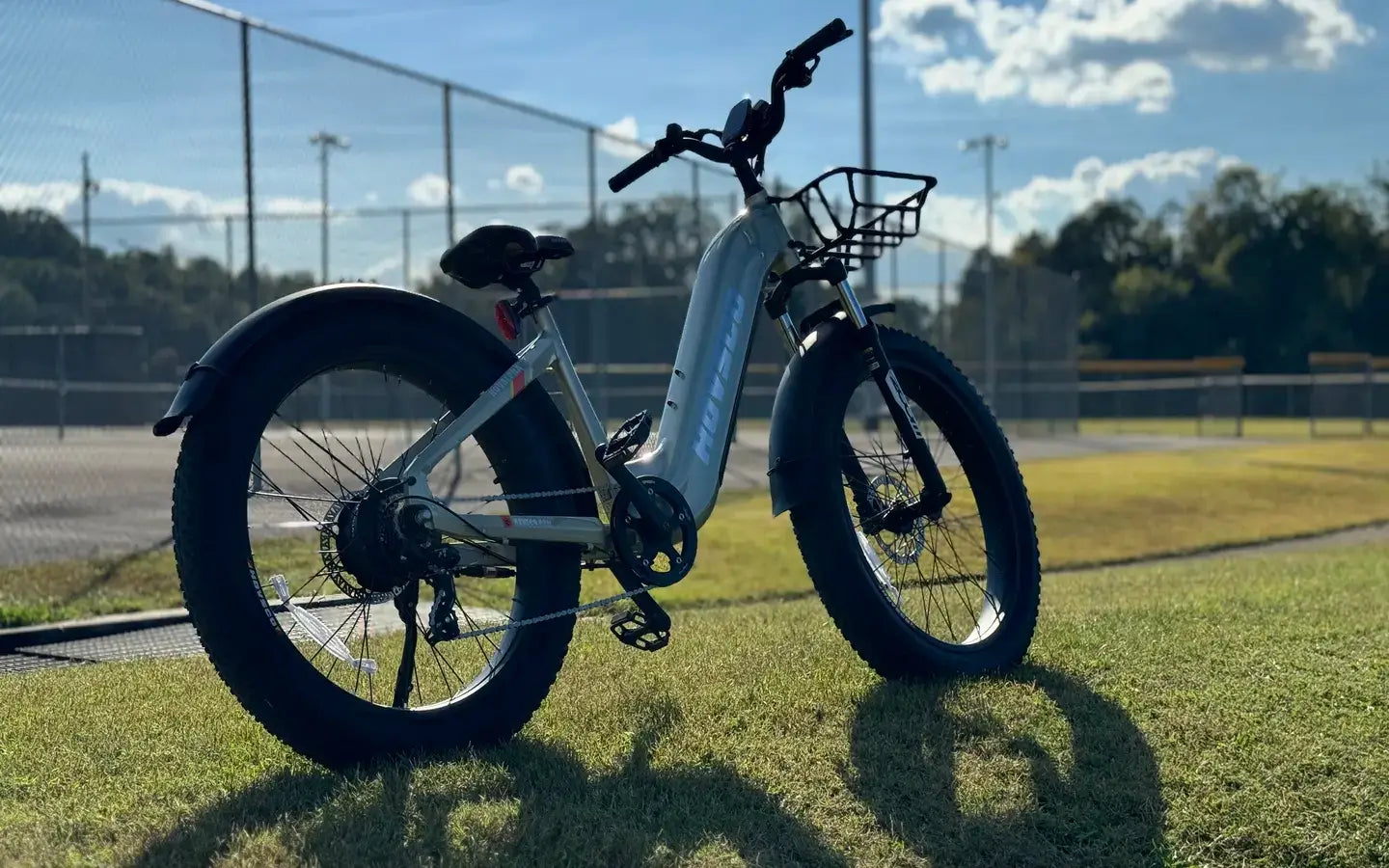
- by LiuJiazhu
How Do Fat Tire E-Bikes Handle Cargo?
- by LiuJiazhu
Fat tire e-bikes excel at handling cargo due to their wide, stable tires that provide enhanced traction and balance, even on rough or uneven terrain. Their robust frames and powerful motors support substantial weight, allowing riders to carry heavy loads securely. The combination of fat tires and electric assist ensures smooth rides with improved control when hauling cargo.
Fat tire e-bikes are uniquely suited for cargo transport because their oversized tires distribute weight evenly, reducing ground pressure and increasing stability. This design allows them to carry heavier loads without compromising balance or ride quality. Additionally, many fat tire e-bikes feature reinforced frames and strong rear racks or cargo platforms designed to support substantial weight, often over 150 kg (330 lbs).
The wide contact patch of fat tires increases grip on various surfaces, including sand, snow, mud, and gravel. This enhanced traction prevents slipping and wobbling, which is critical when carrying cargo that shifts the bike’s center of gravity. Fat tires also absorb shocks and vibrations, contributing to a smoother ride that protects both the cargo and rider.
Cargo Stability Comparison Chart
| Feature | Fat Tire E-Bike | Standard Tire E-Bike |
|---|---|---|
| Tire Width | 3.8" to 5" | 1.75" to 2.5" |
| Ground Contact Area | Large | Small |
| Traction | High | Moderate |
| Shock Absorption | Excellent | Limited |
| Cargo Stability | Superior | Moderate |
Fat tire e-bikes often support cargo capacities ranging from 150 kg (330 lbs) up to 264 lbs or more on the rear rack alone, depending on the model and frame design. Some models feature dual-battery setups to maintain power delivery even under heavy loads, ensuring consistent performance on long rides or steep climbs.
Motor power is crucial for managing cargo on fat tire e-bikes. Motors typically range from 250W to 750W or higher, with torque outputs that help maintain speed and control when hauling. Higher torque motors (e.g., 55Nm or more) provide better hill-climbing ability and acceleration under load, making cargo transport less strenuous for the rider.
Proper loading is essential for safe and efficient cargo transport:
Distribute weight evenly between front and rear racks or baskets.
Secure cargo tightly with straps or bungee cords to prevent shifting.
Avoid exceeding the manufacturer’s stated weight limits.
Position heavier items low and centered to maintain a low center of gravity.
Check tire pressure regularly to accommodate heavier loads without sacrificing traction.
Fat tire e-bikes maintain excellent performance across diverse terrains, including sand, snow, gravel, and rough trails. Their wide tires and powerful motors allow them to glide over obstacles and soft surfaces where standard tires might sink or slip. This versatility makes fat tire e-bikes ideal for cargo hauling in urban, rural, and off-road environments.
Terrain Performance Chart
| Terrain Type | Fat Tire E-Bike Performance | Standard Tire E-Bike Performance |
|---|---|---|
| Sand | Excellent | Poor |
| Snow | Excellent | Poor |
| Gravel | Very Good | Moderate |
| Pavement | Good | Excellent |
| Mud | Very Good | Moderate |
When purchasing a fat tire e-bike for cargo, prioritize models with strong frame construction and high cargo capacity racks. Look for powerful motors (at least 500W) with high torque for hill climbing and heavy loads. Battery capacity should be sufficient for your typical ride distances, ideally with options for dual batteries. Consider features like hydraulic disc brakes for reliable stopping power and integrated cargo accessories. Brands like HOVSCO offer innovative designs that balance power, stability, and cargo versatility, making them excellent choices for heavy-duty use.
"HOVSCO recognizes that fat tire e-bikes are revolutionizing cargo transport by combining rugged terrain capability with impressive payload capacity. Our engineering focuses on optimizing weight distribution and motor efficiency to ensure riders experience stable, powerful rides regardless of load. Fat tires are not just about style—they are a functional necessity for safe, reliable cargo hauling in diverse conditions." — HOVSCO Product Development Team
Q: Can fat tire e-bikes carry heavy cargo without compromising battery life?
A: Yes, but heavier cargo increases power consumption. Choosing models with larger batteries or dual-battery systems helps maintain range under load.
Q: Are fat tire e-bikes suitable for urban cargo delivery?
A: Absolutely. Their stability and cargo capacity make them excellent for city deliveries, especially on mixed terrain or rough roads.
Q: How does tire pressure affect cargo handling on fat tire e-bikes?
A: Lower tire pressure improves traction and shock absorption but may reduce efficiency. Adjust pressure based on load and terrain for optimal handling.
Q: Do fat tire e-bikes require special racks for cargo?
A: Yes, sturdy racks designed for higher weight limits and wider tires are recommended to safely secure cargo.
Q: Is it difficult to maneuver fat tire e-bikes when fully loaded?
A: They are heavier and wider, so maneuvering requires practice, but their stability and power help maintain control even with heavy cargo.
Fat tire e-bikes combine the best of power, stability, and versatility, making them exceptional for cargo transport across a range of environments and loads.
Share:
Why Is the Safety of Electric Cargo Bike Rear Seats Important?
What Benefits Do Electric Cargo Bikes With Rear Basket Offer?